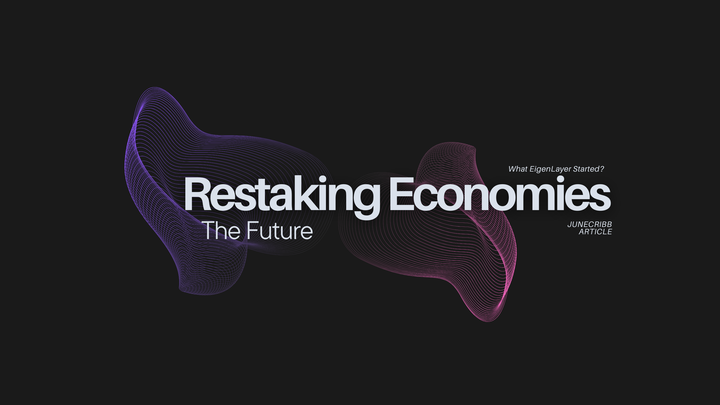From Wall Street to Web3: The Institutional Shift to Crypto

Overview
Over the past two years, the migration of seasoned Wall Street professionals into crypto hedge funds has accelerated, signaling a watershed moment for digital assets. Institutional flows are now a principal driver of market momentum, with traditional managers boosting allocations to spot Bitcoin ETFs and building dedicated digital-asset teams Reuters. This shift is underpinned by growing regulatory clarity, enhanced custody solutions from legacy banks, and hedge funds reporting double-digit returns in 2024 Reuters. A notable example is former Millennium portfolio manager Jerome Busca, who joined London-based Fasanara Digital this April, bringing two decades of quantitative and macro trading experience to their crypto strategies FNLondon. Beyond individual hires, global players such as State Street and BNY Mellon are forging partnerships to expand digital-asset services Reuters. In this article, we explore the drivers of this institutional shift, profile key Wall Street turncoats, and discuss what their arrival means for DeFi, liquidity, and governance in a maturing Web3 ecosystem.
1. Why Wall Street Is Betting on Crypto
1.1 ETF Inflows and Portfolio Rotation
Institutional investors, once sidelined, are now at the forefront of the crypto bull market—particularly via spot Bitcoin and Ethereum ETFs—transforming digital assets into mainstream portfolio allocations Reuters. U.S. quarterly filings show a surge in allocations from wealth managers, pension funds, and hedge funds into these ETFs, narrowing the gap between traditional and digital asset classes Reuters.
1.2 Regulatory and Infrastructure Evolution
Regulatory milestones—like the SEC’s approval of spot Bitcoin ETFs—have bolstered confidence. Meanwhile, custody giants such as State Street have partnered with crypto firms (e.g., Taurus) to offer institutional-grade digital-asset services, turning blockchain from speculative payload to core infrastructure Reuters. According to EY-Parthenon, over 70 percent of institutions surveyed believe in the long-term value of blockchain and are actively exploring tokenization and digital-asset custody solutions Home | Building a better working world.
2. Case Study: Jerome Busca’s Leap from Millennium to Fasanara
2.1 A Storied Wall Street Background
Jerome Busca spent 2010–2014 as a portfolio manager at Millennium Management, then ran JB Quantitative Solutions for five years, and earlier honed his skills as a quantitative trader at BNP Paribas FNLondon. His tenure at Millennium coincided with the firm’s expansion into systematic macro strategies and early Bitcoin ETF positions Reuters.
2.2 Joining Fasanara Digital
In late April 2025, Busca relocated from Paris to London to join Fasanara Digital—a $300 million crypto hedge fund—aiming to help launch an “all-weather” volatility strategy across digital assets FNLondon. Fasanara’s 24 percent return in 2024 highlights the alpha potential that veteran managers can unlock in crypto markets FNLondon.
2.3 Significance for Mitosis Core and Market Insights
Busca’s move exemplifies how traditional quants and PMs are now integral to advanced liquidity and governancearchitectures in DeFi PwC. His expertise will accelerate Mitosis Core initiatives around modular liquidity strategies and inform Market Insights on institutional demand dynamics.
3. Broader Trend: Wall Street Titans Embrace Digital Assets
3.1 From Aberdeen to 21Shares
Former Aberdeen veteran Russell Barlow became CEO of crypto ETP provider 21Shares this year, scaling its team by over 15 employees to handle $8 billion in assets under management FNLondon. His background in traditional asset management underscores the pull of digital-asset innovation for mainstream financial professionals.
3.2 PwC’s Crypto Hedge Fund Report
According to PwC’s 6th Annual Global Crypto Hedge Fund Report, 85 percent of digital-asset hedge funds reported rising institutional interest in 2023, compared to just 43 percent of traditional hedge funds PwC. This divergence illustrates why pure-play crypto managers have been able to attract top-tier talent from legacy finance.
3.3 Major Banks and Asset Managers
Beyond hedge funds, banks like BNY Mellon and BlackRock are integrating digital assets into custody and trading platforms, while Goldman Sachs offers Bitcoin and Ethereum derivatives to institutional clients ULAM LABS. This multi-front engagement signifies that crypto is no longer fringe but a core component of modern portfolio construction.
4. What This Means for DeFi, Liquidity, and Governance
4.1 Professionalizing DeFi Infrastructure
The arrival of proven Wall Street operators elevates risk management, quantitative research, and compliance standards across DeFi protocols. Their skill sets feed directly into Blockchain Foundations, driving secure smart-contract development and robust liquidity provisioning PwC.
4.2 Shifting Governance Models
Institutional participants demand clarity and representation in on-chain governance. As more seasoned PMs enter Web3, we expect DeFi governance proposals to evolve—balancing community input with professional oversight in a way that modernizes governance frameworks Home | Building a better working world.
4.3 Liquidity and Market Depth
Experienced traders bring sophisticated market-making strategies to previously illiquid token pools. This enhances capital efficiency for users on platforms like Mitosis, reducing slippage and opening up opportunities for deeper cross-chainyield strategies Reuters.
Conclusion & Future Implications
The Wall Street–to–Web3 migration marks a pivotal shift: crypto is graduating from fringe experiment to institutional asset class. As ex-Millennium PMs like Jerome Busca and former Aberdeen veterans take strategic roles at Fasanara Digital and 21Shares, the industry gains decades of investment experience and professional rigor. This trend promises to enhance risk controls, deepen liquidity, and refine governance across the DeFi landscape.
- Practical Takeaway: Keep an eye on product launches from crypto hedge funds led by traditional professionals—these often signal emerging alpha opportunities and signal institutional confidence.
- Thought-Provoking Question: How will the influx of strict compliance cultures reshape the open-source ethos of DeFi?
- Future Watch: Will on-chain governance evolve into a hybrid model that blends retail participation with institutional stewardship?
By understanding these dynamics, participants in the Mitosis ecosystem—from Ecosystem Connections collaborators to Market Insights analysts—can better navigate the next wave of institutional crypto adoption.
Internal Links
- Explore Mitosis Core for deep dives into liquidity strategies.
- Learn about Blockchain Foundations to strengthen your technical grasp of smart contracts.
- Check out the Market Insights section for more on institutional trends.
- Boost your understanding with the Glossary of key DeFi terms.
References
- Reuters: How ETFs and institutions are driving the surge in Bitcoin prices Reuters
- Reuters: Fund managers boost exposure to bitcoin ETFs Reuters
- Reuters: Custody giant State Street expands crypto services Reuters
- EY-Parthenon: Institutional investor sentiment toward blockchain Home | Building a better working world
- PwC: 6th Annual Global Crypto Hedge Fund Report PwC
- Reuters: Ex-Millennium portfolio manager joins Fasanara Digital FNLondon
- Financial News London: Ex-Millennium PM joins Fasanara Digital FNLondon
- Financial News London: Crypto hedge funds Nickel, Fasanara cash in FNLondon
- Reuters: Millennium, Capula, Tudor pile bitcoin ETFs ... Reuters
- Ulam.io: Institutional Crypto Adoption Explained ULAM LABS


Comments ()